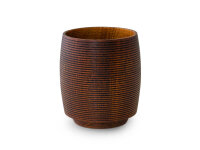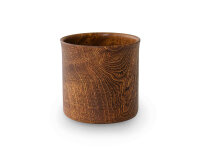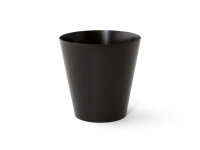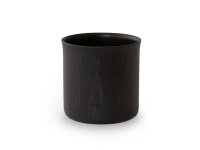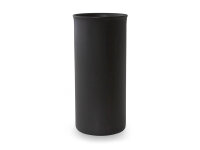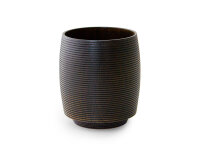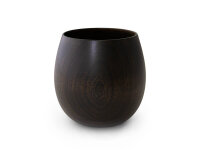
Tea Bowls and Tea Cups
Tea Bowls and Cups for Tea Enthusiasts
The culture of tea drinking is hardly comparable to anything else. It's not the quick espresso at the bar, nor is it the cup of coffee in a social gathering. Drinking tea is more. A clergyman once recounted feeling immense happiness when he was offered a cup of tea and savored it after a long, cold, and strenuous hike. Chado, the way of tea, the Japanese tea ceremony, goes even further. It's not just about enjoyment. The ritual, which encompasses the preparation, serving, and consumption of Matcha and comes from Zen Buddhism, is highly meditative as a whole and serves inner reflection. It cannot succeed without attention. Silence is an absolute requirement.
Good, indeed perfect preparation is just as important as the brewing and attentive enjoyment. Especially in the usually small group that typically participates in the ceremony, "we" is more important than "I." However, Chado is not the only tea culture that shows us that tea drinking holds a special place for many people. Also, in many Western cultures - whether in England, Scandinavia, and others - customs have developed around tea enjoyment, which have at least one commonality: enjoying tea often means being very aware and attentive "in the moment."
Tea, Tea Ware, and Utensils
Being attentive and mindful when enjoying tea begins long before the water boils. It starts with the equally conscious selection of the tea, the tea ware you want to use, and often even the place that is ideal for a few, perhaps quiet and thoughtful moments. We have described our small tea selection to the best of our ability. We have also dedicated many lines to our potters' teapots. Now, let's talk about tea bowls, teacups, and matcha bowls. What can Oryoki offer you, why are there such significant differences, and what is the right drinking vessel?
The Matcha Bowl - Raku Chawan
For those who are not yet familiar, they will first be surprised by how large it is. This is because matcha - both thin matcha usucha and thick koicha - is prepared in the bowl. The preparation reaches its peak when you whisk the tea with a matcha bamboo whisk until it becomes frothy. The perfect matcha has a layer of quite firm foam on the surface, and yes, this foam is not only a visual but also a flavorful experience. Matcha bowls are typically made of ceramic. There are affordable ones as well as extremely elaborately crafted matcha bowls adorned with beautiful patterns. Handcraft, artistic executions, old Raku tea bowls of high value, and the message that the ceramic artist imparts in their work are highly valued. Raku means "quiet joy" and is a pottery technique from Japan that is over 500 years old. The fact that so much importance is attached to this drinking vessel is surely closely related to the high regard these people have for the ritual of tea enjoyment.
Chawan - the Teacup
The Japanese teacup is relatively small, similar in size to fine teacups. It holds approximately 90 - 160 ml and is often not filled completely, especially the larger ones. The size is simply because in Japan, green tea is preferably enjoyed freshly prepared. This means that Japanese tea drinkers prepare as much tea as needed to fill the teacups once. Since green teas are usually steeped multiple times, you drink freshly prepared tea 3 - 4 times. Clay, ceramic, porcelain, and the famous lacquerware are the preferred materials. However, there are also cast iron teacups that keep the tea warm for a longer time. Teacups made of clay or ceramic have the advantage of enhancing the tea's flavor after prolonged and proper use. Depending on whether they have a glazed or very porous surface on the inside, this effect can be quite pronounced or very subtle. However, it is recommended to use teacups with a porous surface only for very similar teas; otherwise, taste distortion can occur.
The Tea Cup
Yes, tea cups are also used in Japan. Where the designation of a teacup ends and a tea cup begins in terms of size is probably not defined. But the clear difference lies in the possible volume of the tea cup, which is larger. It would be incorrect to assume that tea cups are used to serve larger quantities of tea. Even in tea cups, usually only 100 ml or slightly more is served. It is probably just a very personal choice whether one prefers a tea cup or a teacup. As for materials, there is no difference from the teacup: you can find tea cups made of ceramic, clay, porcelain, and lacquerware, but we have not yet discovered cast iron tea cups.
Enjoy the selection process and a delightful tea time, which fortunately lasts for 12 months a year with green tea.

